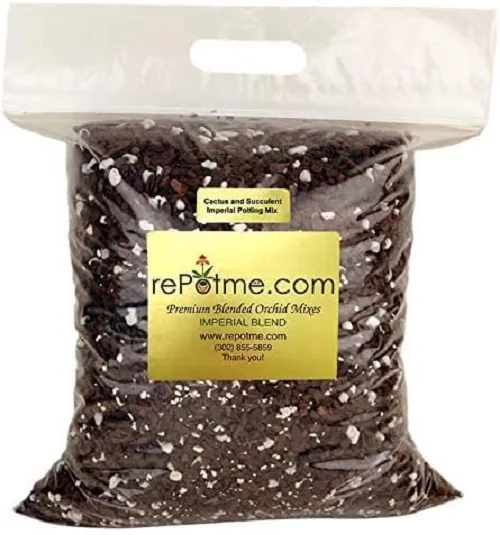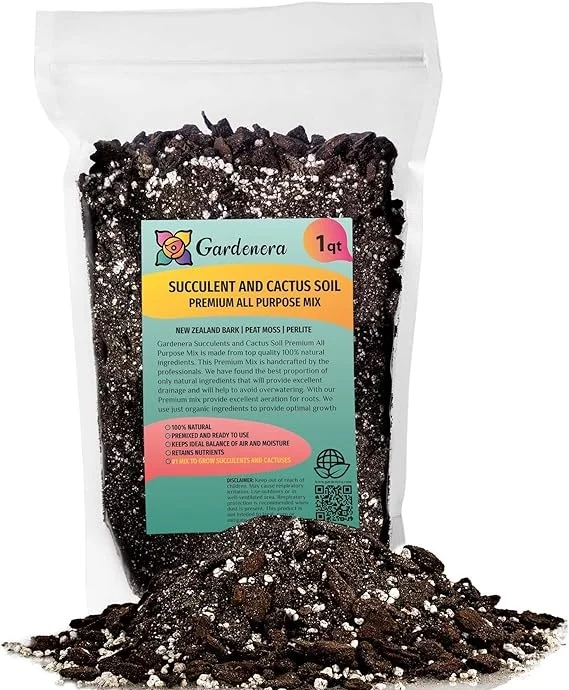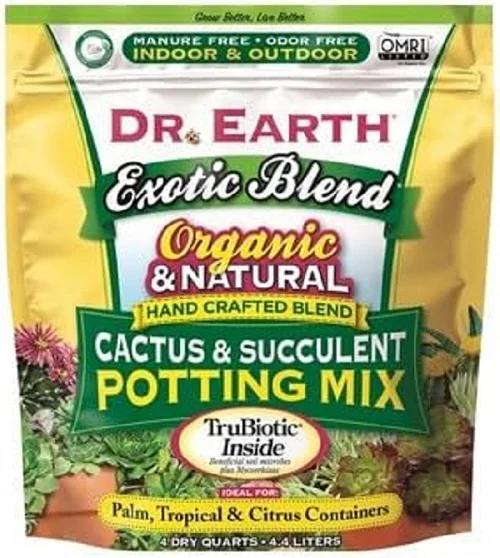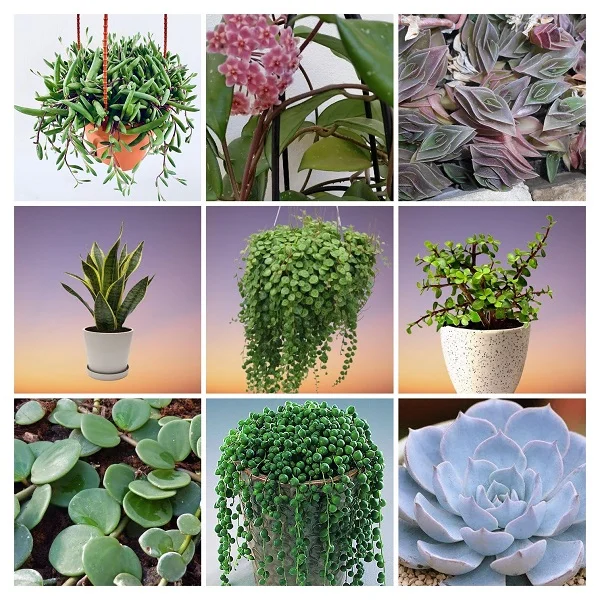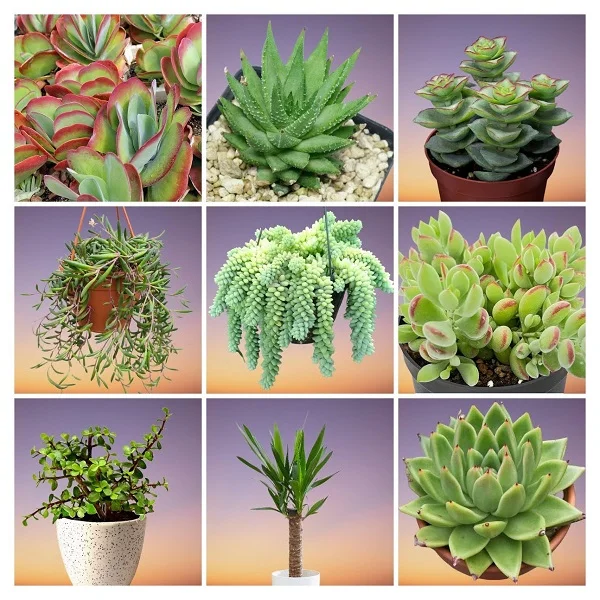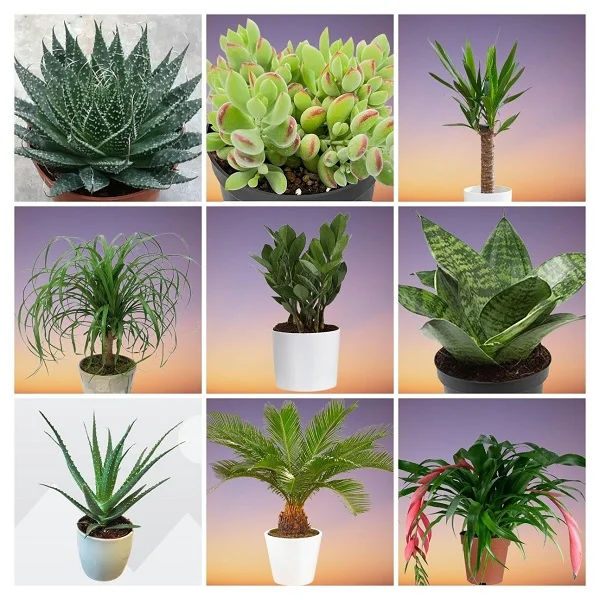Woolly Crassula (Crassula tomentosa) Indoor Care, Propagation, Problems & Solutions
Some links in this post may be affiliate links
Crassula tomentosa (Woolly Crassula) prefers bright light with some sunlight, average warmth and humidity, and moderately moist, well-drained soil coupled with monthly feeding in spring and summer.
Woolly Crassula is included in the popular Crassula varieties and bears rounded disc-like, gray-green leaves in an overlapping manner and are covered with tiny white hairs along the edges.
Woolly Crassula is a compact, slow-growing succulent which spreads by means of stolons on which new plantlets grow around the mother plant forming small colonies which makes this plant ideal for an indoor garden or a wide shallow pot.
Crassula tomentosa is a monocarpic plant which means that each rosette flowers only once, sets seeds and then dies.
Crassula tomentosa has two subspecies; Crassula tomentosa var tomentosa Thunb and Crassula tomentosa var glabrifolia G.D.Rowley which is more densely branched.
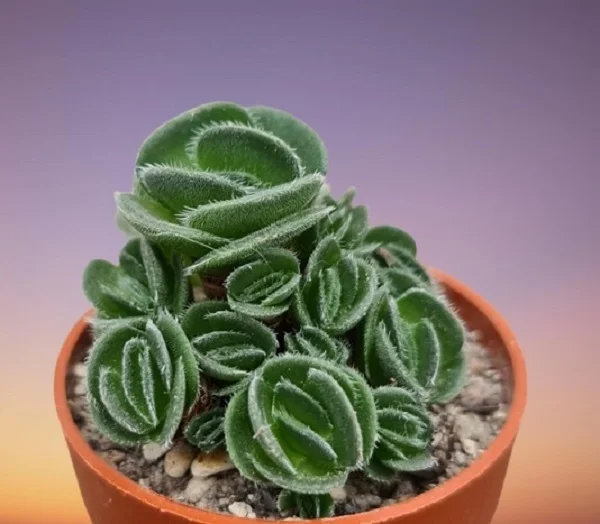
Botanical name: Crassula tomentosa
Synonyms: Crassula lingufolia, Purgosea tomentosa, Crassula conspicua
Family: Crassulaceae
Common names: Woolly Crassula
Origin
Crassula tomentosa is native to Cape Province of South Africa and Southern Namibia where it is found growing in stony slopes, sheltered rock crevices and under overhanging rocks.
Size
Woolly Crassula only grows to a height of about half a foot and bears numerous plantlets at the base which can be used to grow new plants. On account of its compact size, it is one of the popular plants for limited spaces.
Flower
Woolly Crassula Succulent blooms in early to mid summer with white to yellowish flowers which are borne above the foliage on a 2 feet tall flower-stalk.
Is Crassula tomentosa poisonous?
Yes. Crassula tomentosa like its cousin, Jade Plant, is thought to be toxic to both humans and pets as outlined by ASPCA. If ingested it can cause nausea, vomiting and diarrhea. Keep the plant away from the reach of children and pets.
How to care for Crassula tomentosa Indoors
To care for Crassula tomentosa indoors, give it bright light with at least 4-6 hours direct sunlight, warmth of 15-260C, humidity of 50-55% and moderately moist, fast-draining soil coupled with monthly feeding in spring and summer.
Woolly Crassula requires repotting only when pot-bound or when the potting medium is completely broken down. Pruning is necessary to keep the plant neat, to create enough space for new plants and to minimize pest and disease infestations. Keep reading for more on these growing conditions and how to provide them.
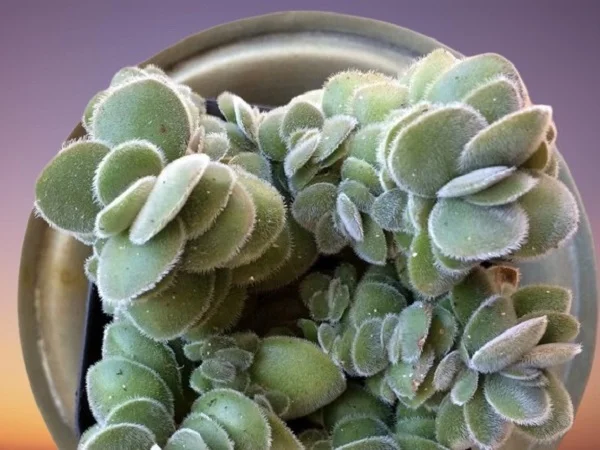
Watering
How often should I water Crassula tomentosa?
Water your Crassula tomentosa liberally in spring and summer and allow the soil to dry out between waterings. Take care not to overwater to avoid rotting, yellowing and leaf loss.
Lessen watering in fall and winter as growth is minimal at this time, thus, the plant does not need a lot of water for growth. Do not allow the soil to dry out completely for a prolonged period to prevent, wilting, yellowing and leaf drop.
Only use water that is at room temperature to avoid cold shock as it can result in reduced growth, brown leaf spots and leaf fall. Water with chlorine-free water like rainwater to prevent browning of the leaves.
Ascertain that the pot has a drainage hole and the soil is well-draining to prevent waterlogging which can lead to rotting and death of the plant.
Be careful not to wet the foliage to avoid fungal diseases; water from the bottom instead. Always empty the bottom saucer (plate) once the plant has absorbed enough water.
Light Requirements
Does Crassula tomentosa need sunlight?
Crassula tomentosa needs bright light with at least 4-6 hours of morning or afternoon sunlight. Keep or shield it away from hot midday sunshine to prevent scorching of the leaves.
If the natural lighting is not adequate, use full spectrum grow lights to supplement it to avoid stunted growth, legginess and yellowing of leaves.
Rotate the pot regularly to make sure that the plant receives light on all sides for uniform growth.
Woolly Crassula can be grown outdoors, however, gradually acclimate it and place it in a shaded place first to prevent scorching of the leaves.
Temperature & Humidity
Crassula tomentosa flourishes in a warmth of 15-260C in spring and summer with a minimum of 100C in the in fall and winter.
Keep it away from drafts like breezy doors and windows, air conditioning units, heat sources, stoves and others as prlonged exposure can cause stunted growth and death of the plant.
Woolly Crassula has no need for extra humidity; a humidity of 50-55% is ideal for this plant. Ensure good air circulation to discourage fungal disease infestations which are prevalent in damp, poorly ventillated conditions.
Fertilizer
Crassula tomentosa is a slow grower, therefore, take care to give it too much fertilizer. Feed it with a cactus and succulents fertilizer monthly in spring and summer to boost growth.
Stop feeding in fall and winter as growth is reduced and feeding at this time can lead to fertilizer burn and death of the plant.
Every 2-3 months, flush out accumulated salts by running a stream of water through the soil until it drains through the drainage hole. Allow it to run for about 5-10 minutes to clear most of the salts.
Potting Soil
The best soil for Crassula tomentosa should be coarse, low in organic matter and one that drains fast to prevent it from getting soggy. The soil should be loose enough to allow water to drain out easily. Most Cactus and succulents mixes are perfect for this plant.
Repotting
Repot Crassula tomentosa at the beginning of the growing season (spring and early summer), only when pot-bound or when the potting medium has completely broken down.
Use a pot that is 1 size larger than the current one to avoid overpotting and retention of excess moisture. Make sure that the pot has a drainage hole and the soil is free-draining to prevent root-rot and loss of the plant.
Use a clay pot rather than a plastic or ceramic pot as a clay pot is porous and allows the soil to dry out faster to keep it from staying wet for too long. Take a look at these terracotta pots with saucer on Amazon.
Before repotting, ensure that the soil is dry. Remove the plant from its pot and brush off soil from the roots. Snip off any dead or dry roots and treat the wounds with a fungicidal solution.
Position the plant in the center of its new pot and back fill with fresh, loose, fast-draining soil while spreading the roots as you fill the pot. Do not fill the pot completely but allow about 1 inch unfilled for watering space.
Replace the plant to its display position and keep it dry for about 5-7 days to reduce the risk of rot-root disease.
Pruning & Mainteance
Pruning Crassula tomentosa entails removal of any dead or diseased leaves to keep it neat, allow enough space for new plants and also minimize pest and disease infestations.
Snip the leaves at the base with a sterilized knife or clean pair of pruning scissors to prevent diseases transmission from plant to plant. Minimize the number of cuts as much as possible to avoid unnecessary injuries to reduce fungal disease infestations.
Keep the leaves clean by use of a soft brush to get rid of dust as well as discourage pest and disease infestations.
Crassula tomentosa Propagation
Crassula tomentosa (Woolly Crassula) is propagated from offsets or from leaf cuttings. The best time to propagate is at the beginning of the growing season (spring to early summer) when in active growth for faster establishment.
1. Propagating Crassula tomentosa from offsets
- Carefully seperate the offset from the mother plant by cutting with a clean, sharp knife while ensuring that the offset has adequate roots.
- Fill a small pot one thirdway with a well-draining soil and moisten it slightly.
- Position the offset in the center of the pot and continue to cover the roots with the soil while firming the soil lightly. Maintain the offset at the same soil level as it was in the previous pot.
- Place the set-up in a warm, well-lit place away from direct sunlight to prevent scorching.
- Maintain good air circulation to discourage fungal diseases.
- Keep the soil slightly moist through out until the new plant is well established after which you can begin routine care.
2. Propagating Crassula tomentosa from leaf cuttings
- Take leaf cuttings complete with the petiole from a healthy plant.
- Allow the leaf cutting to dry out (callus) for a few days to prevent rotting.
- Fill a rooting container with a fast-draining soil and wet it slightly. Ensure the container has a drainage hole to avoid rotting.
- When calloussed, lay the leaf cutting on moistsoil while ensuring that the cut end does not come into contact with the soil to prevent rotting.
- Postion the set up in a warm, well-lit place away from direct sunlight to prevent scorching of the leaf cuttings.
- Maintain the soil slightly moist through out and ensure that there is good air circulation to prevent fungal diseases.
- With time, the leaf cutting will form roots and eventually a small rosette will form at the base of the leaf cutting. This may take from 4-6 weeks.
- Allow substancial growth of the rosette before transplanting the new plant into its own pot after which you can begin routine care.
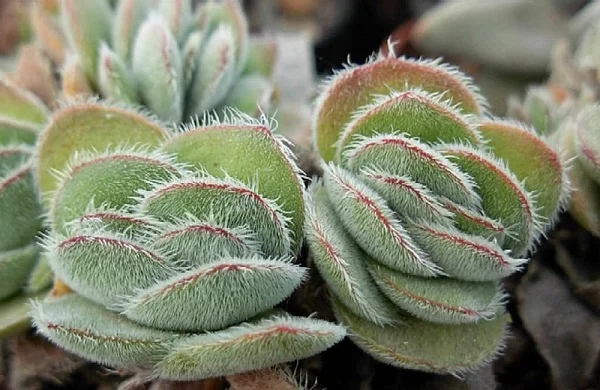
Crassula tomentosa Problems & Remedies
Crassula tomentosa (Woolly Crassula) common issues are plant dying, yellow leaves, wilted & droopy leaves, pests and diseases among others. Keep reading for more on these problems and how to solve them.
Plant dying
Why is my Crassula tomentosa dying?
Your Crassula tomentosa is dying due to root-rot which is prevalent in soggy soil. The disease is characterized by yellowing and wilting of the leaves which is rapidly followed by browning and plant collapse.
How to fix it
- Carefully slip the plant out of its pot and inspect the roots; brown-black mushy roots indicate root-rot.
- Trim the rotten roots and treat the healthy roots with a copper-based fungicidal solution as recommended by the manufacturer.
- Repot the plant in fresh soil and a fresh pot. Use a pot with a drainage hole and fast-draining soil to prevent it from getting soggy.
- Position the plant in very bright light and stop watering for a few days to give the plant enough time to recover. After the dry period, resume routine care.
Yellow leaves
The main causes of yellow leaves on your Crassula tomentosa are insufficient light, soggy soil, inconsistent watering, drafts, nutrients deficiency or aging.
How to fix it
Insufficient light: Position the plant in bright light with 4-6 hours of direct sunlight or use a grow light if you do not have adequate light in your home.
Soggy soil: Use well-draining soil and a pot that has a drainage hole.
Inconsistent watering: Water when the top 2-3 inches of soil dry out but do not allow the soil to dry out completely.
Drafts: Keep the plant away from sources of drafts like hot air vents, AC units, hot surfaces, windy doors and others.
Nutrients deficiency: Feed the plant monthly in spring and summer with a cactus and succulents fertilizer.
Aging: This is a natural process. As the lower leaves mature, they turn yellow, brown and eventually die.
Wilted & droopy leaves
Wilted and droopy leaves on Woolly Crassula are caused by underwatering, soggy soil, drafts or pest infestations.
How to fix it
Underwatering: Do not water on a schedule. Water when the top 2-3 inches of soil dry out but do not allow the soil to dry out completely for long periods.
Soggy soil: Use well-draining soil and a pot with a drainage hole.
Drafts: Keep the plant away from sources of drafts like AC units, windy doors, drafty windows, hot air vents among others.
Pest infestations: Regularly inspect the plant for the pests and carry out timely control measures.
Pests
Common pests on Crassula tomentosa are scale insects, mealybugs and spider mites which are prevalent in dry, stuffy conditions.
How to fix it
- Isolate the affected plant to prevent spread to the rest of the plants.
- Treat the infested plant with neem oil or an insecticidal soap as per the manufacturers' instructions on the labels.
- Regularly check underneath and between the leaves for these pests and carry out timely control measures.
- Keep the plant well pruned and increase humidity to reduce the pest infestations.
Diseases
Woolly Crassula is prone to powdery mildew and leaf spot disease which are prevalent in overwet conditions coupled with poor air circulation.
How to fix it
- Isolate the affected plant to minimize spread to the other plants.
- Treat the affected plant with neem oil as per the manufacturer's instructions.
- Maintain free air flow to discourage the diseases.
- Water from the bottom to avoid wetting the leaves.
- Always allow the soil to dry out between waterings.
- Use a pot with a drainage hole and fast-draining soil to prevent waterlogging.
You liked it? Share on social media.
Related Content
Amazon Associates Disclosure
Homeplantsguide.com is a participant in the Amazon Services LLC Associates Program, an affiliate advertising program designed to provide a means for sites to earn advertising fees by advertising and linking to amazon.com.
